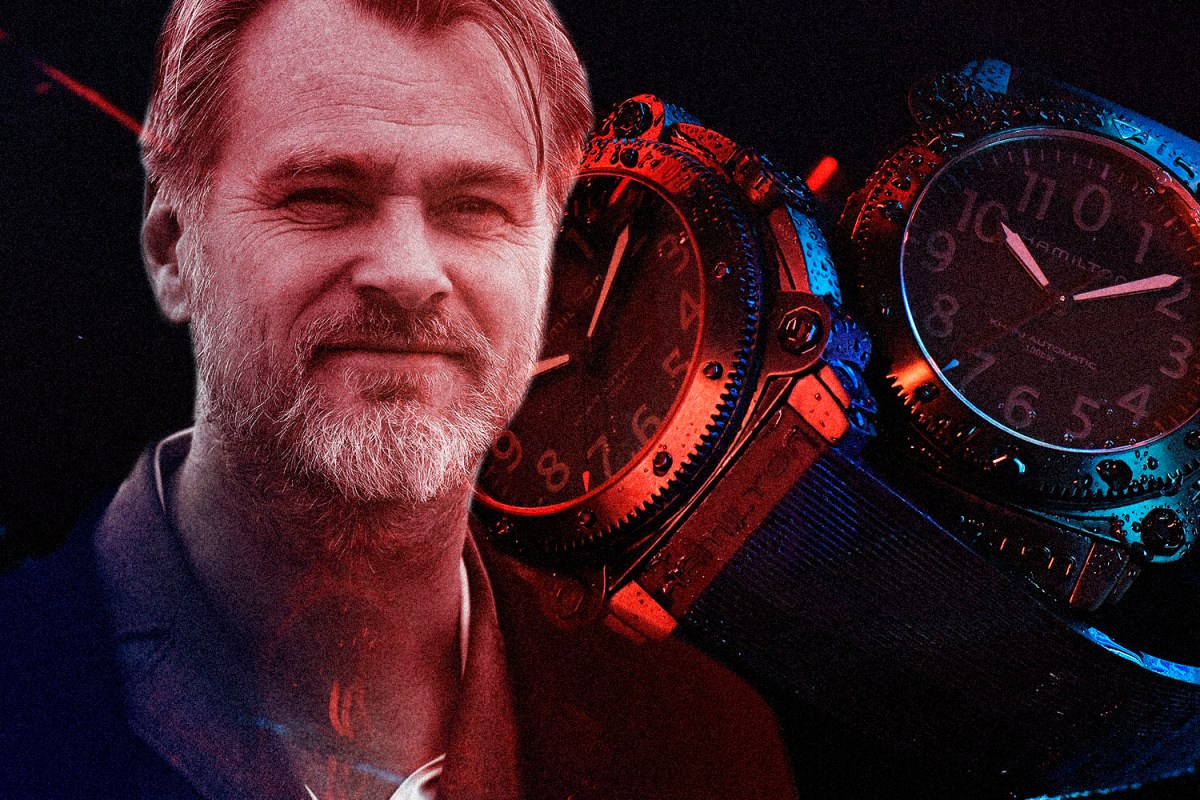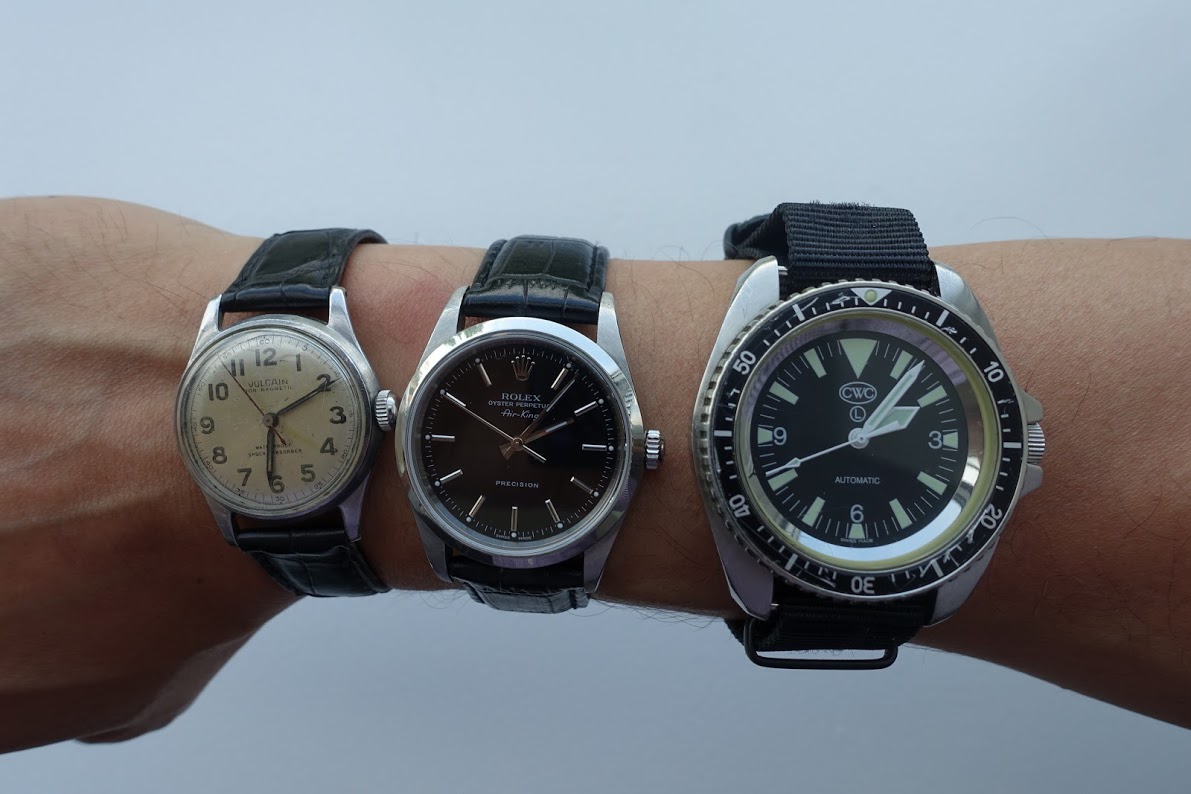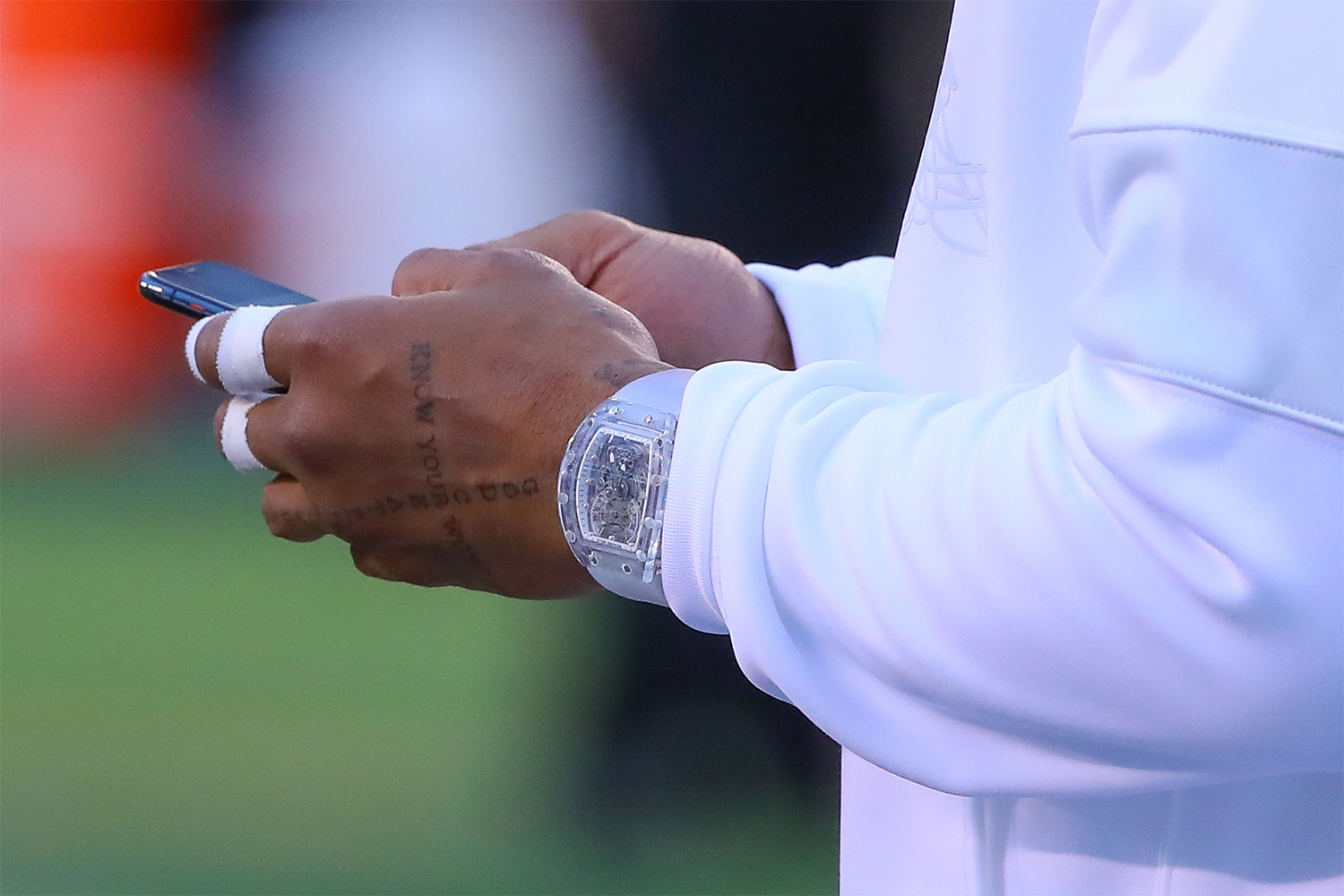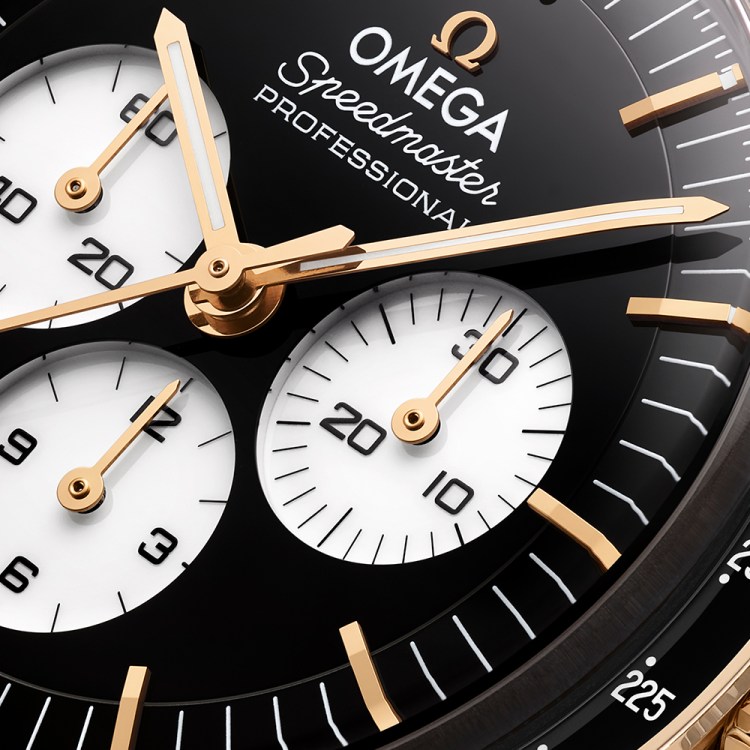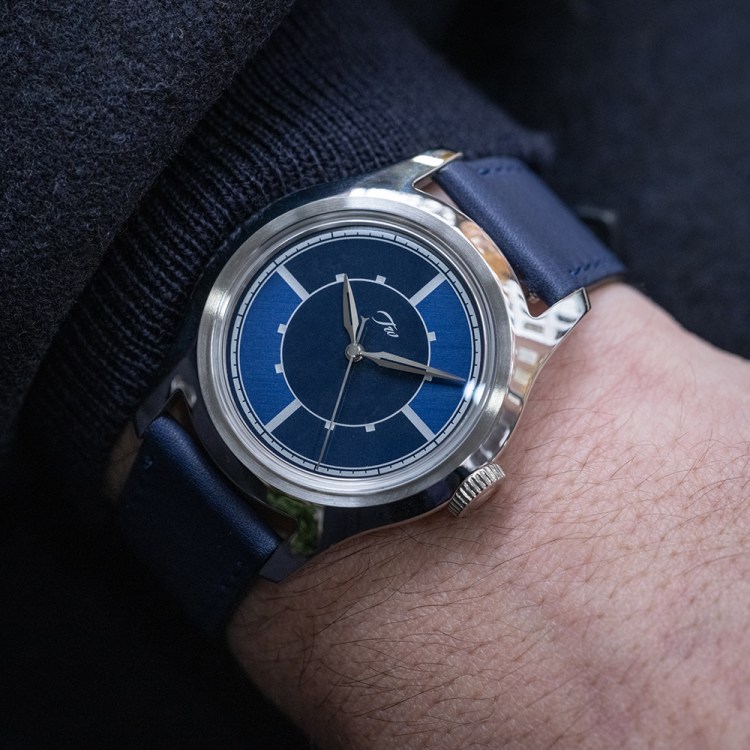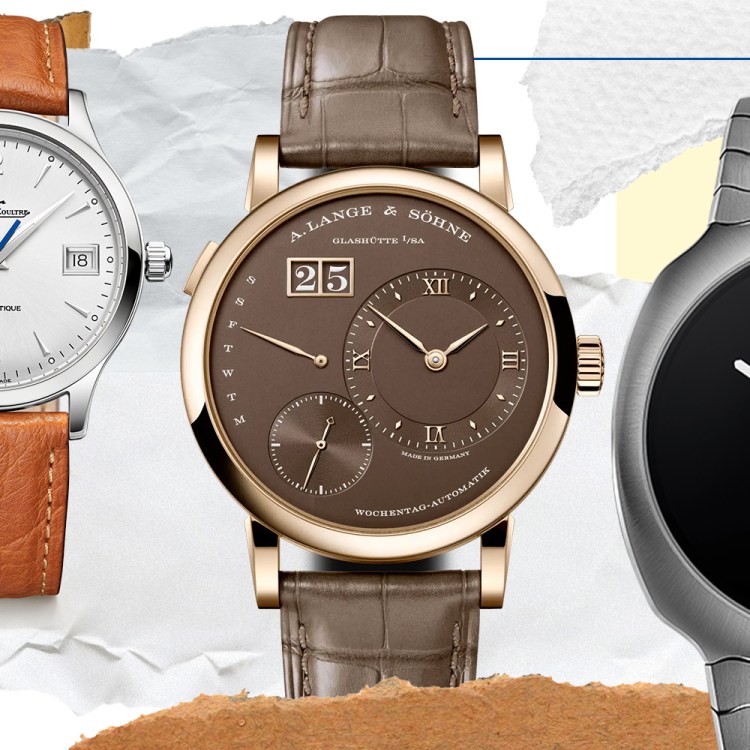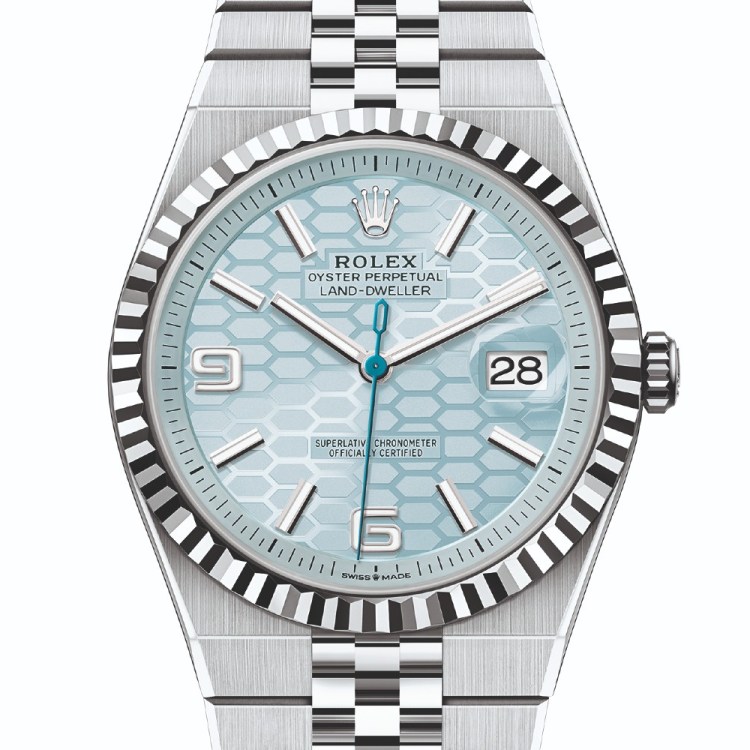“You’ve got the suit, the shoes, the watch, but you’re a little out of your depth.”
In Christopher Nolan’s latest time-bending epic Tenet, the protagonist, played by John David Washington, faces unfathomable challenges — starting with a terrorist attack in Ukraine and ending with the onset of World War III. But between that deadly, international gauntlet, he faces a rather inconsequential, pedestrian one: he’s dressed down first by a British Intelligence officer played by Michael Caine and then by Kat (Elizabeth Debicki), who delivers that first dispassionately savage line, over his clothes and accessories.
While moviegoers may not be able to relate to the actual plot of Tenet — most reviewers, including those at The New Yorker and The New York Times, admit they don’t even understand all the details — these moments provide instant relatability. Everyone, at some point in their lives, has felt like an imposter, someone dressing up for a part. In these scenes, Nolan shows us that Washington’s character is more concerned with his mission as a CIA agent than pulling off the trappings of his disguise.
Those trappings — the suit, the shoes, the watch — have historically been the sartorial clues the affluent use to identify their own. But as the influence of the casual continues spreading unabated, as the one percent embrace athleisure and sneakers, the importance of the watch has become magnified. So too has the watch grown in importance with Nolan, a director who has built his mystique and legacy on his blockbuster dissertations on the subject of time.
Nolan prominently features two wristwatches in Tenet, both worn by Washington. There’s the Hamilton Jazzmaster Seaview Chrono Quartz, this aforementioned dressier option the protagonist wears when attempting to score a meeting with superyacht-owning villain Andrei Sator (Kenneth Branagh), and a movie-specific version of the Hamilton Khaki Navy BeLOWZERO, which features a red or blue digital display below traditional watch hands and becomes instrumental in understanding what is certainly the most paradoxical shoot-em-up in cinema history.
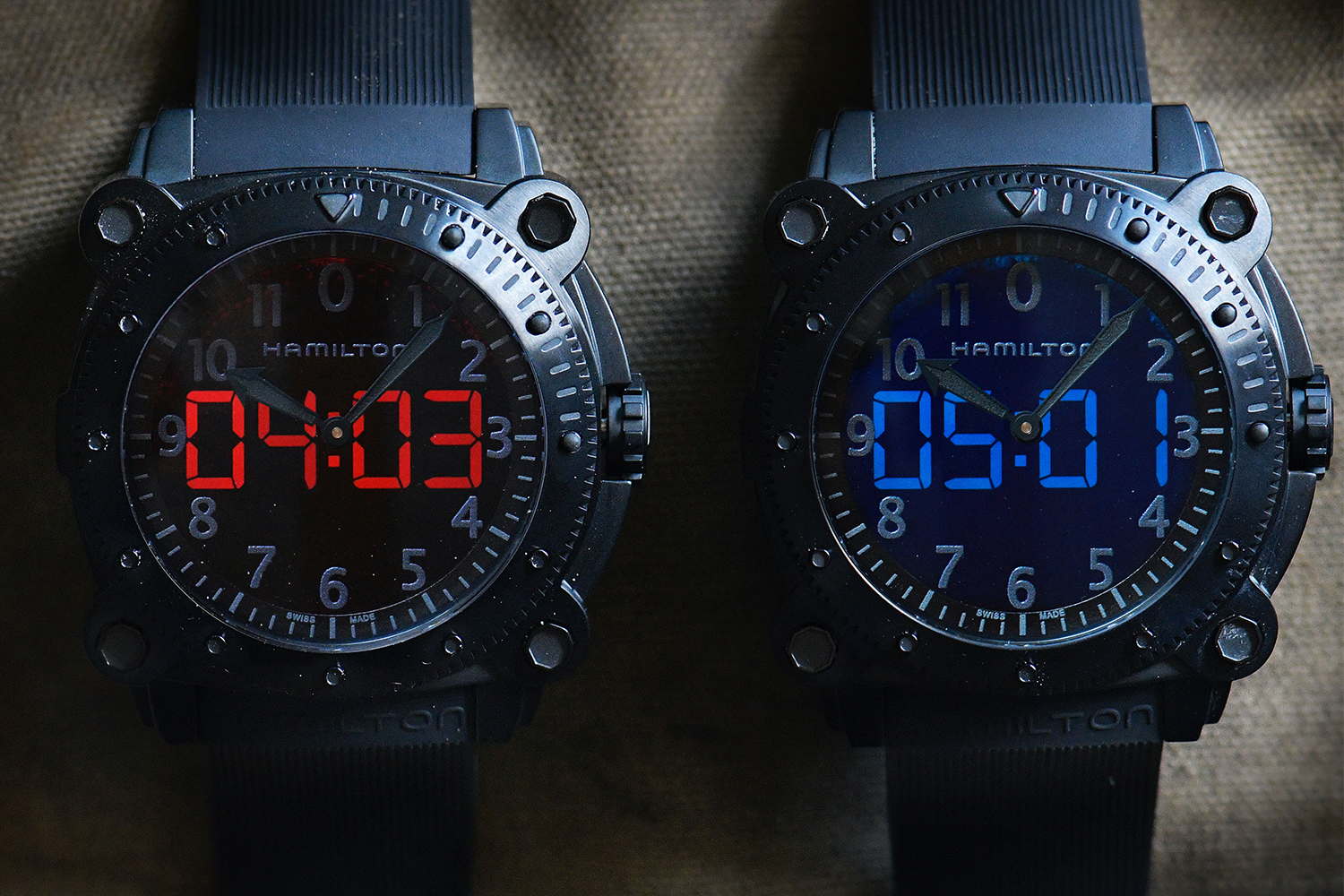
Considering Nolan is the rare director who has found a way to marry his singular, revered cinematic style with the artless formula that is the box-office smash — he holds three spots on the list of the top 100 highest grossing movies of all time — he has absolutely no need for the type of brand loyalty or product placement these watches suggest. Furthermore, Nolan has shown, as early as his debut feature film Following from 1998, that he can portray, discuss, manipulate and harness time without ever bringing literal, physical watches — much less branded products — into the frame. But in his most ambitious movie to date, he does.
Which all leads to the inevitable question: when did Christopher Nolan become the watch guy of cinema?
Many in the worlds of horology, fashion and entertainment have recently traced Nolan’s history with physical watches back to his first collaboration with Swiss watch brand Hamilton. As Nathan Crowley, Nolan’s longtime production designer, told InsideHook via email, “We had such a great experience with them for Interstellar and I knew we could count on them to create exactly the prop watch we needed [for Tenet].”
Upon this summer’s COVID-delayed release of Tenet, the story of Nolan the watch guy has been told in these two acts, but it actually goes back much further, and gets at a core trait of the director that verges on lore.
“He’s unfailingly punctual — like, unbelievably punctual. And it’s really quite noticeable,” says Tom Shone, adding, “He’s a very keen timekeeper. It was so funny because everything about [Tenet] is about outwitting time and defeating time and releasing yourself from the constraints of time, and he in person is just incredibly punctual and incredibly observant of that kind of continual tick-tock that rules our lives.”
Nolan, as befits someone whose movies make hundreds of millions of dollars even in the middle of a global pandemic, is not easy to pin down. But if you can’t talk to him yourself, Shone is currently the second best resource. The longtime film critic, currently writing for the Sunday Times in the U.K., has known Nolan for decades and has been working on a book with the director for the last four years titled The Nolan Variations: The Movies, Mysteries, and Marvels of Christopher Nolan, which is out in November. As Shone put it, the internal clock that runs Nolan’s life goes back to a very literal one that ruled the British-American auteur’s formative years.
“When he went to boarding school in England, their day was very regimented,” Shone explains. “There was a big clock overlooking the quad, the main yard, so life at that school was very much lived under the clock.” While that may seem a common enough upbringing, its manifestation in Nolan is so pronounced that not only did Shone take note of it gradually throughout years of interviews, but Steven Soderbergh told The New York Times in 2014 that “Chris is legendary for being prepared, being on time, on schedule.”
When did that obsession with the tick-tock of time manifest physically in the form of watches in Nolan’s films? As the foremost expert on the director’s filmography, not just his boarding school decor, Shone honed in on a number of instances off the top of his head.
When you first look at [Nolan’s films] … there’s a sort of temptation to view it as a mostly technical matter and to see him as this kind of grand watchmaker of cinema.
Tom Shone, film critic and author of “The Nolan Variations”
First, there’s the ticking watch in the soundtrack of Dunkirk. While moviegoers will certainly remember that stressful element of Hans Zimmer’s score, what you may not know is the ticking was provided by Nolan’s own watch.
In an interview for the World War II film from 2017, Nolan discussed this element of the music after admitting that he has “a bunch of different watches,” saying, “I made a series of recordings of different watches and different ticking sounds because I wanted that to be the sort of seed that the whole score would grow from, and then I handed those over to Hans.” The sound that made the cut from the bevy of options was that of an old-school pocket watch, which is a particular type of timepiece that Shone notes also figures prominently in The Prestige from 2006. But there are plenty of others.
There’s the TAG Heuer Carrera Calibre 5 Leonardo DiCaprio wears in Inception, the dial of which is shown in close-up less than five minutes into the movie. There’s the Omega Ref. CK2129 Tom Hardy wears in Dunkirk, which he uses to track the level of fuel left in his Spitfire. There are even some distinctive timepieces in Nolan’s Batman trilogy — which many critics discuss as a separate entity to his otherwise deeply personal oeuvre — including Christian Bale wearing a Jaeger-LeCoultre Reverso Grande Taille and Reverso Grand Date. Additionally, there are also a couple Hamilton pieces in Batman, though worn by secondary characters, like Joseph Gordon-Levitt in a Khaki Field Titanium and Matthew Modine in a Jazzmaster Viewmatic. And then, of course, there are the two Hamilton watches Nolan specifically created for Interstellar and Tenet.
While Nolan himself has called Tenet a “classic spy story,” and critics have been quick to compare Washington’s CIA agent to James Bond, the introduction of Hamilton seems to have been the antithesis of the blatant product placement that has come to dominate the 007 franchise. As Ritchie Kremer, prop master for Interstellar, told watch blog Hodinkee, “I approached Hamilton on my end during prep, and I walked into Chris and I go, ‘Hey Chris, I’ve got this great idea of using Hamilton watches, and here’s their catalog.’” Nolan’s response? “‘Oh, we’ve already been in touch with them.’” (It’s no wonder Nolan was drawn to Hamilton, as the company also created custom pieces for Stanley Kubrick’s 2001: A Space Odyssey, a formative film for the director.)
“For Interstellar, we were creating a custom watch, combining components from several of our existing timepieces to match the request. We provided the prop watch to the film team who then added the necessary technology to portray Murph receiving messages via the ticking of the second hand in the movie,” Hamilton CEO Vivian Stauffer tells InsideHook. “For Tenet, we had to take the technological components into account from the very beginning with the idea we were enhancing an existing watch — our Khaki Navy BeLOWZERO — to include features that Tenet’s characters would rely on in the film.”
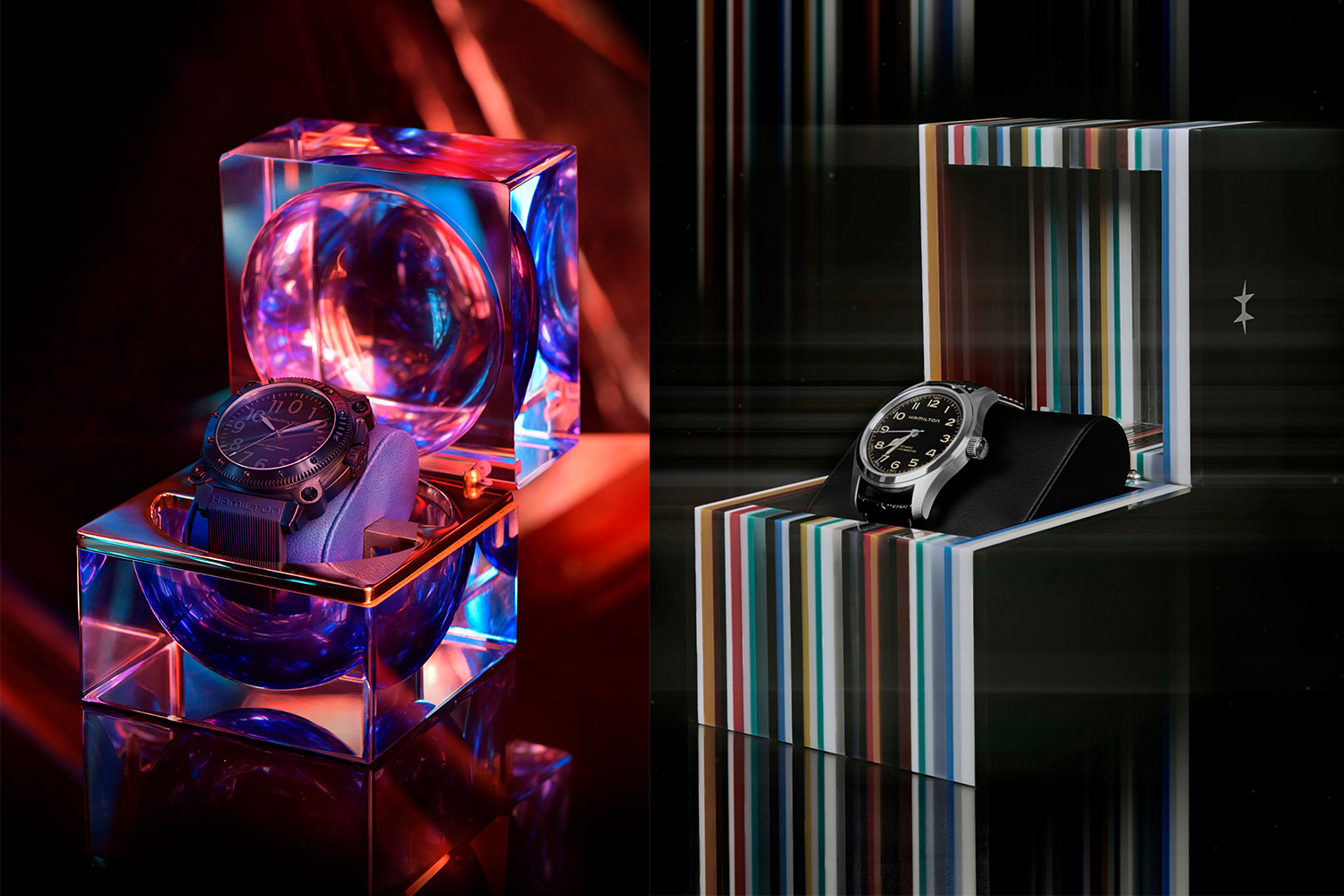
Neither watch, it should be said, is available to buy exactly as it appears in either movie. The Khaki Field Murph Auto is mostly a “faithful recreation” of the watch Matthew McConaughey’s character gives to his daughter Murph (while he himself wears a Khaki Pilot Day Date), but includes a line of Morse code on the seconds hand that reads, “Eureka.” As for the limited-edition Khaki Navy BeLOWZERO, while it is available with either a red-tipped or blue-tipped second hand, neither features the digital display on the dial that makes those in Tenet so compelling — though once you see the actual prop watches (Hodinkee got their hands on them) you’ll understand why. (Although, as Stauffer has said, Hamilton is hoping to release an authentic replica sometime in the future.)
This could quickly and easily become nothing but a list of watches, and certainly does in hyper-niche corners of the internet. But stepping back to look at the basic timeline, what appears is a simultaneous progression through Nolan’s filmography where the concepts of time are getting more complex alongside the watches. There’s the alternating timelines of Memento and a classic clock; The Prestige pairs the splicing of a human timeline with a pocket watch; Inception shows the slowdown of time in dreams on a watch face; Interstellar brings time into space and a custom watch into the climactic scene; Dunkirk spreads three timelines and the watch’s heartbeat throughout the film; and in Tenet, time is warped to an almost incomprehensible degree, and two custom watches lead the audience through that maze to its exit.
“When you first look at [Nolan’s films] and you see how obsessed he is with time … there’s a sort of temptation to view it as a mostly technical matter and to see him as this kind of grand watchmaker of cinema who’s been tinkering with these mechanisms,” says Shone. “But the emotional aspect of time passing, which is something that we all feel, is something that his films are really plugged into as well, and he is.”
The emotional aspect Shone describes comes through in character relationships on screen where “time is literally stealing people away from one another,” and he says Nolan “makes note of that theft — the theft of people, the theft of time.”
Besides being punctual, another thing to know about Christopher Nolan is that he likes to keep his personal life separate from his work. In a 2014 New York Times profile written on the occasion of Interstellar’s release, the paper said he “does not find himself electrifying and does not take his own life as relevant to his work.” But it also went on to quote the director as saying, “Having children absolutely fine-tunes your sense of time and time passing. There’s a desperate desire to hang on to moments as your kids grow up.”
What, in its most basic sense, is a watch? It’s different from the smartphones many people use to tell the time these days, by tapping on a screen or pressing a button and looking at a digital display. it’s different from a virtual assistant that relays the time, and it’s different even from a wall clock or clock tower or microwave clock that must be sought out. A watch is an unceasing, inescapable reminder of the theft of time right there on your arm, never fully out of sight or out of mind.
As Shone says, it’s easy to explain Nolan’s movies in purely technical terms, and the same can be done with Nolan’s use of watches. But once you realize that the point isn’t what model of pocket watch was used in Dunkirk or how the mechanical movement would be affected in the dream worlds of Inception, it becomes clear that Christopher Nolan the watch guy isn’t necessarily concerned with Swiss brands or movements or price tags.
Instead, his chief concern is giving the proper gravity to the time that has already passed himself, his characters and the audience by, time we’ll never get back — though in Tenet, thanks to a Hamilton watch of his own design, he certainly tries his damndest.
This article appeared in an InsideHook newsletter. Sign up for free to get more on travel, wellness, style, drinking, and culture.
